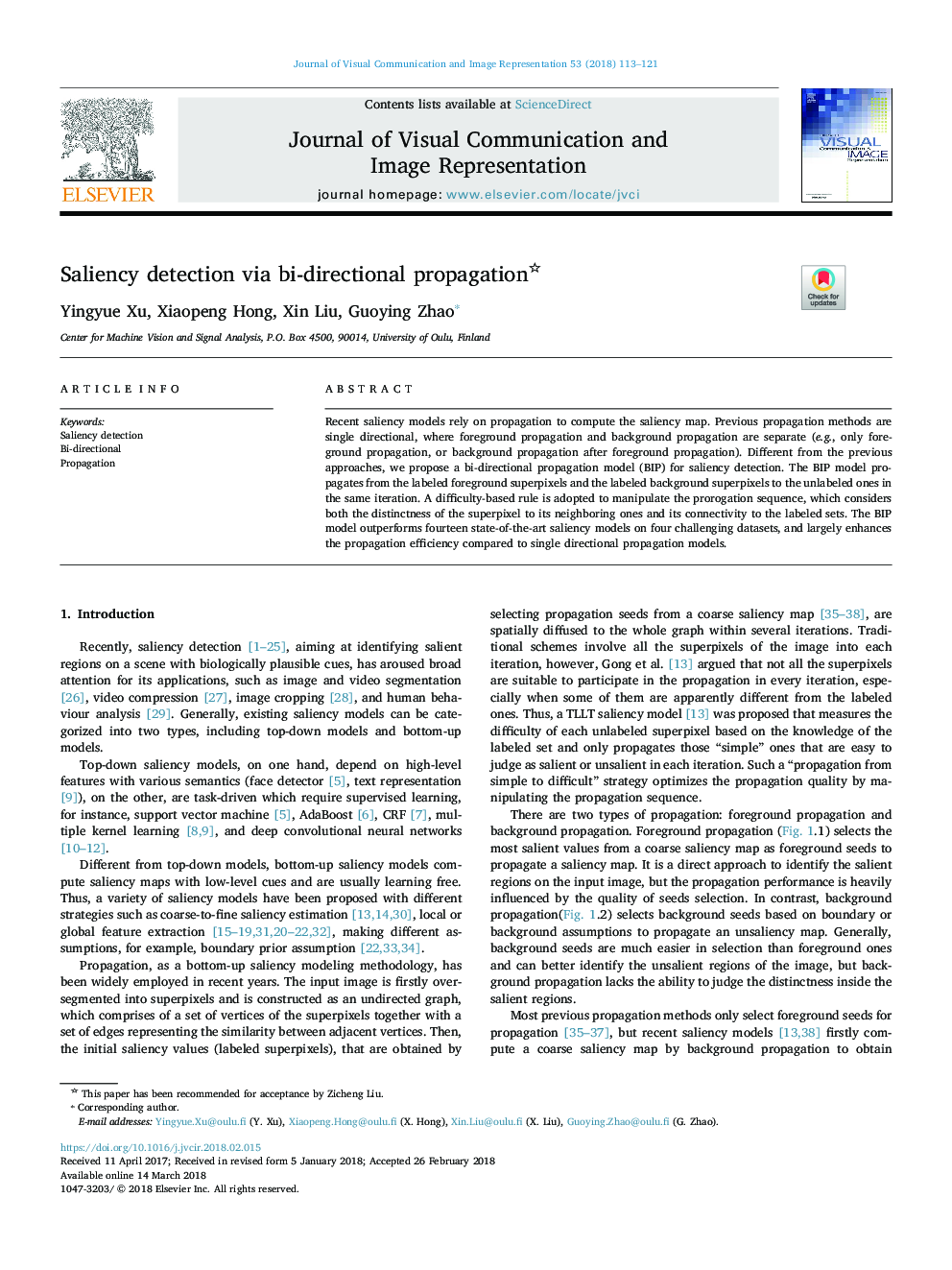| Article ID | Journal | Published Year | Pages | File Type |
|---|---|---|---|---|
| 6938228 | Journal of Visual Communication and Image Representation | 2018 | 9 Pages |
Abstract
Recent saliency models rely on propagation to compute the saliency map. Previous propagation methods are single directional, where foreground propagation and background propagation are separate (e.g., only foreground propagation, or background propagation after foreground propagation). Different from the previous approaches, we propose a bi-directional propagation model (BIP) for saliency detection. The BIP model propagates from the labeled foreground superpixels and the labeled background superpixels to the unlabeled ones in the same iteration. A difficulty-based rule is adopted to manipulate the prorogation sequence, which considers both the distinctness of the superpixel to its neighboring ones and its connectivity to the labeled sets. The BIP model outperforms fourteen state-of-the-art saliency models on four challenging datasets, and largely enhances the propagation efficiency compared to single directional propagation models.
Related Topics
Physical Sciences and Engineering
Computer Science
Computer Vision and Pattern Recognition
Authors
Yingyue Xu, Xiaopeng Hong, Xin Liu, Guoying Zhao,
